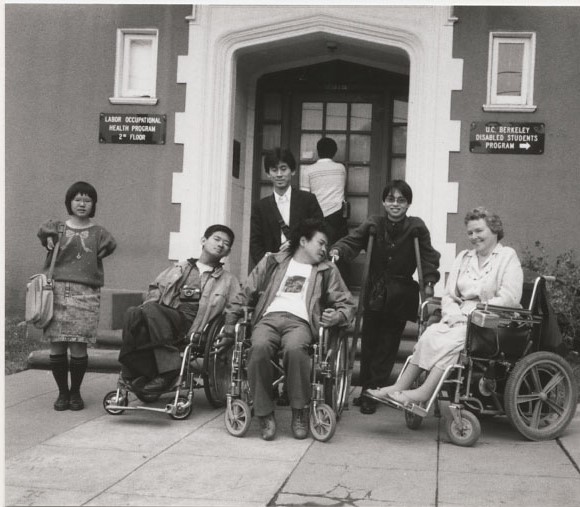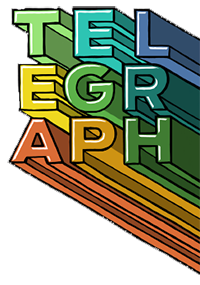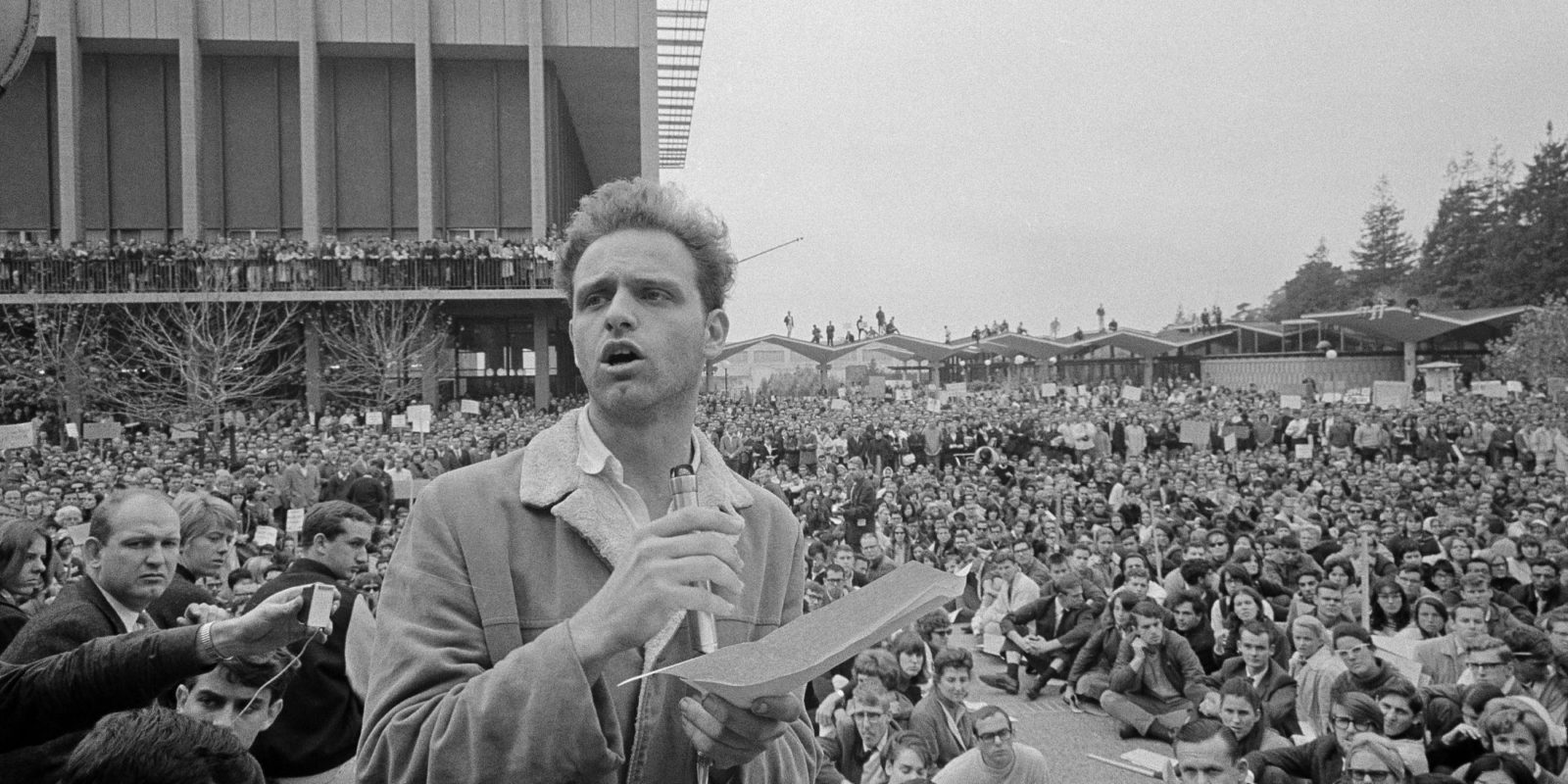Interactive Historical Walking Tour
Experience Telegraph Avenue and the people who inspired and shaped its radical history with exclusive images and audio recordings, curated--all through a free smartphone-enabled app.
in partnership with UC Berkeley Graduate School of Journalism with support from the Berkeley Historical Society, the City of Berkeley's Office of Economic Development. Created by Guidekick, creators for the museum apps for the San Francisco De Young Museum, San Simeon, and the National Gallery in Washington, D.C.
The Free Speech Movement
Location: Sproul Plaza, UC Berkeley
Before the riots, there was the Free Speech Movement (FSM). It defined the ability for college students to protest in the US. How FSM changed the campus and student life across the country.
Commentator: Jack Radley, an organizer of the FSM demonstrations and knew Mario Savio
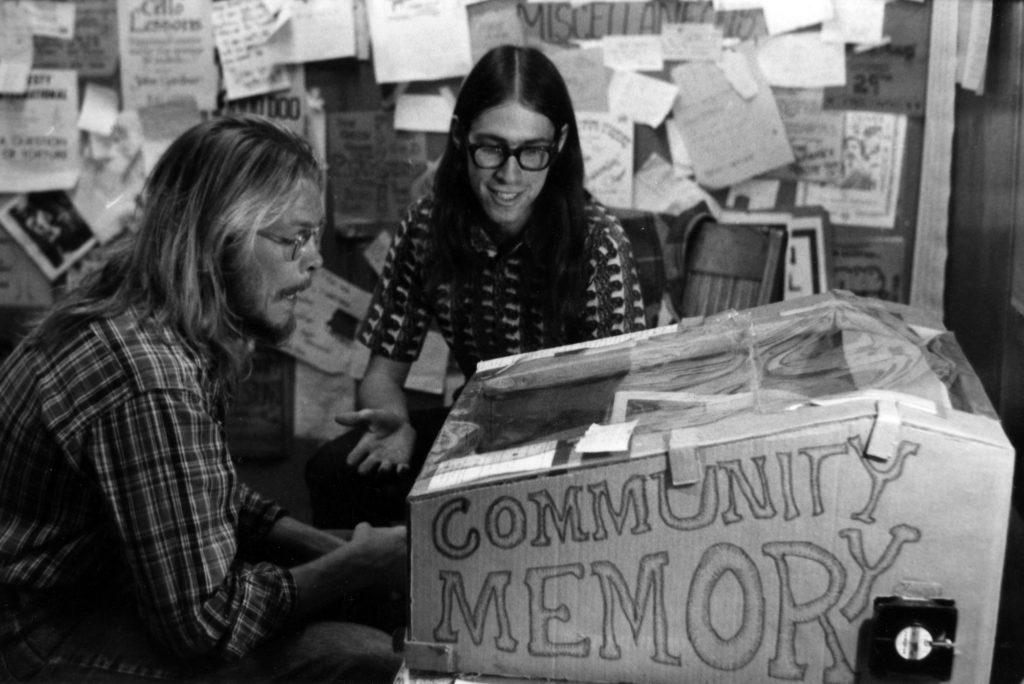
Community Memory at Leopold Records
Location: Games of Berkeley, 2510 Durant
Telegraph had the first public computerized bulletin board system, a precursor to Craigslist. What was it like when modern technology was young and you did not have a smartphone in your hand?
Commentator: Lee Felsenstein, one of the creators of “Community Memory”
Street Artists
Location: Telegraph between Durant and Channing
Telegraph is unique with its street artists and vendors. It was even more unique in the days when nothing was sold unless it came from inside a store. [Photo courtesy of Jan Nacio Brown.]
Commentator: Ed Monroe, street artist since 1974
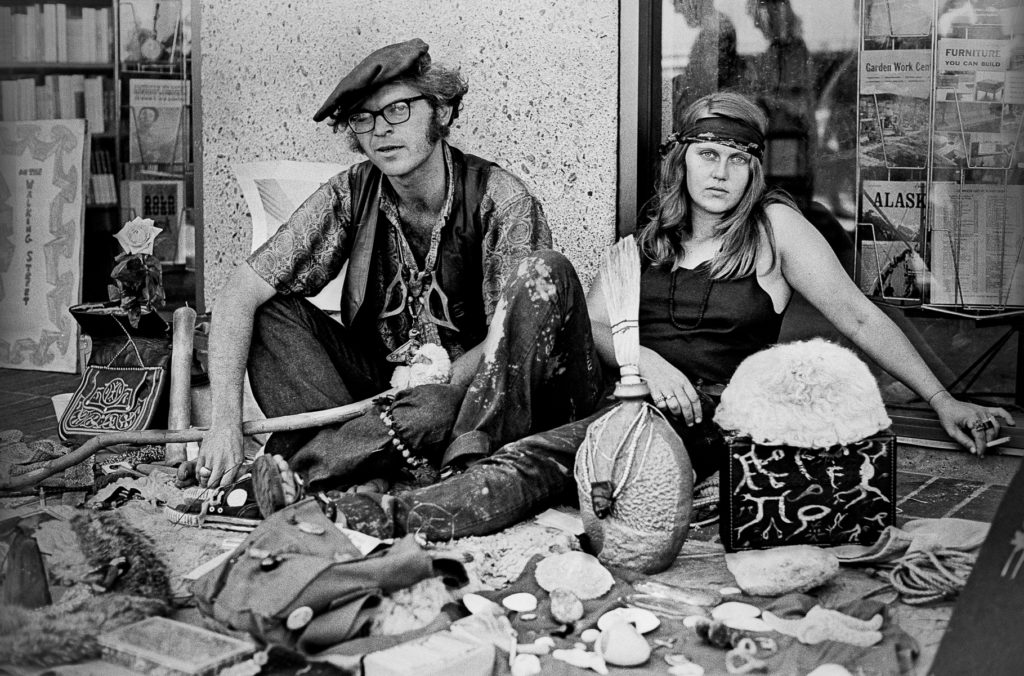
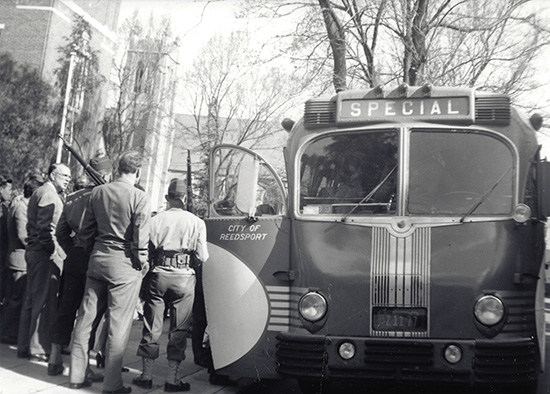
Japanese Internment and the First Congregational Church
Location: First Congregational Church, Dana and Channing
This spot was where Japanese Americans were bused from Berkeley to internment camps in the eastern Sierras in WWII. Why this location is a place of pride for the local Japanese community.
Commentator: Ken Namura, grandson of Internment survivor
Counterculture, Teeny-boppers, and Drugs
Location: Annapurna, 2416 Telegraph
Teeny-boppers, hippies, and the Summer of Love. Telegraph as the center, along with the Haight, of the Counterculture movement. [Photo courtesy of Jan Nacio Brown.]
Commentator: Al Geyer, owner Annapurna since 1969
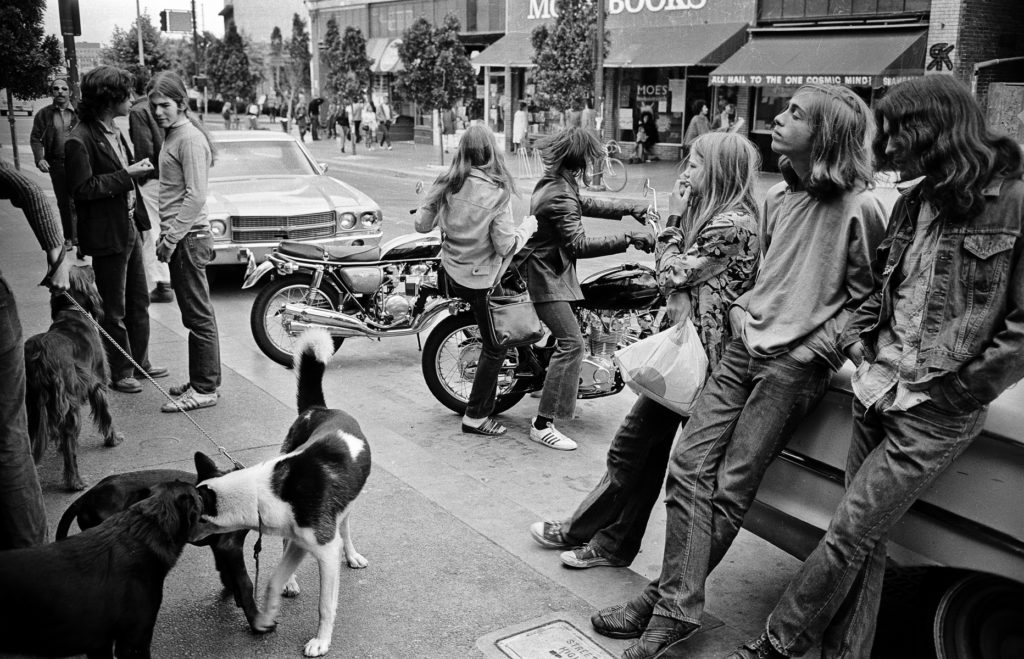
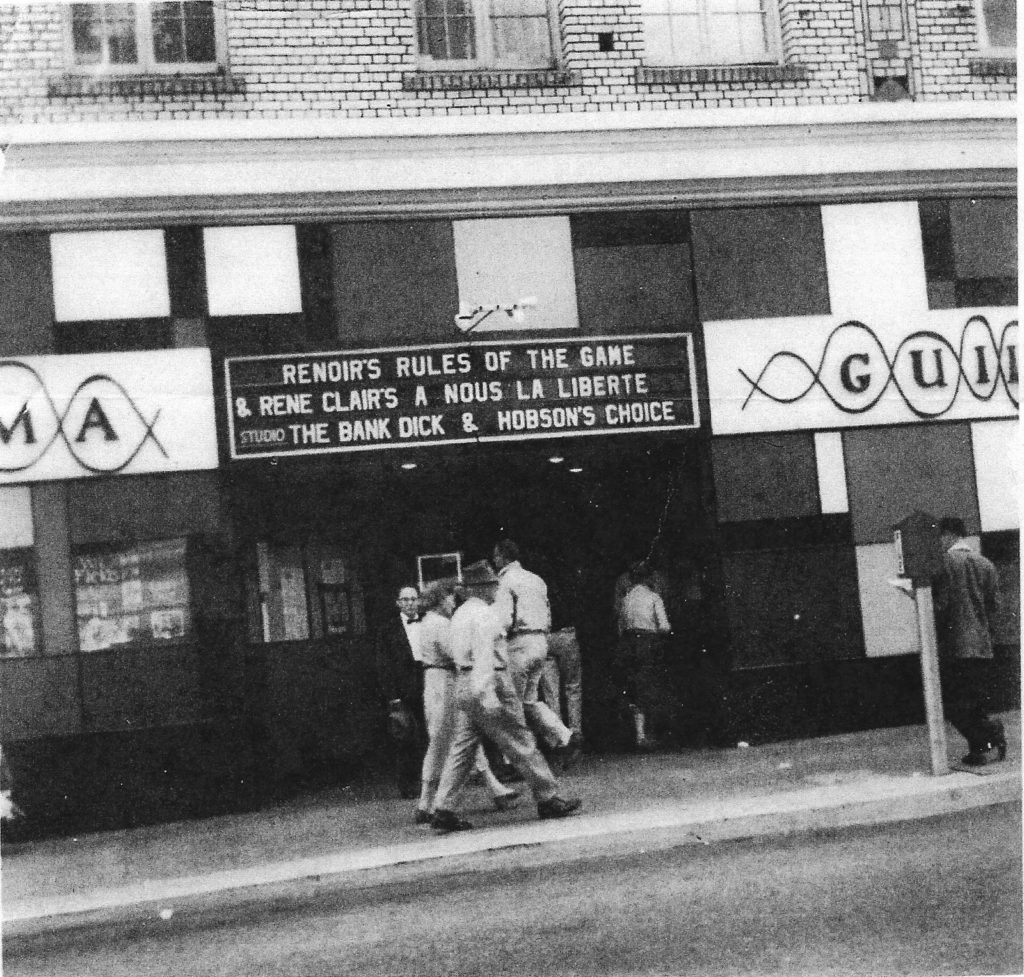
Foreign Cinema and Literary Culture
Location: Telegraph at Haste
There was a time when foreign cinema was, well, foreign. When it was super-cool to show off your reading list to friends.
Commentator: Steve Wasserman, Owner, Heyday Press, who grew up on Telegraph
Satanic Verses at Cody’s Books
Location: Haste and Telegraph
Artist: Rich Black
Before Amazon, bookstores where a gathering spot and a place of expression. When Salomon Rushdie’s book The Satanic Verses came out in 1989, Cody’s was fire-bombed, one of the earliest acts if religious-related terrorism in the US.
Commentator: Andy Ross, former owner of Cody’s Books
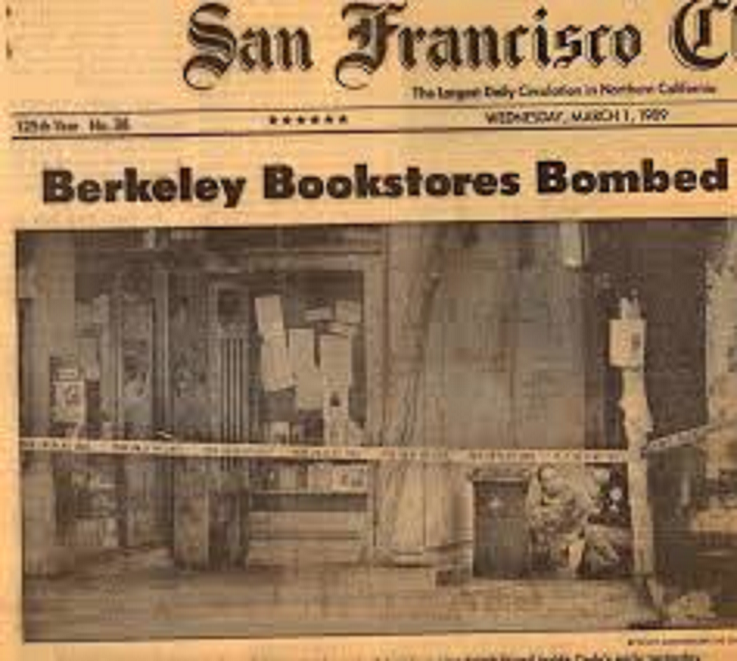
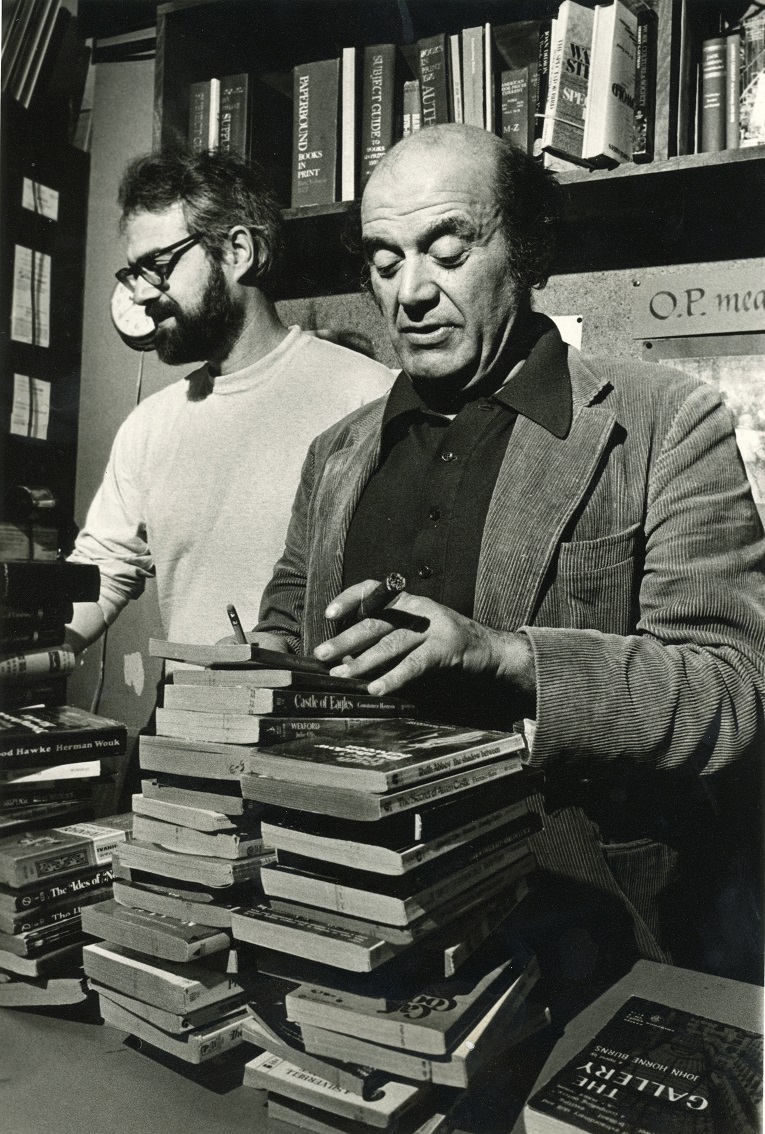
Moe
Location: Moe's Books, 2476 Telegraph
Moe was a kind of loud mouth beatnik father to a generation: Arrested for selling comic books, cited by the City for smoking his trademark cigar, and remembered for his radical bookselling.
Commentator: Doris Moskowitz, owner of Moe’s Books
Race, Discrimination, and the Shop-In
Location: Amoeba, 2455 Telegraph
If you were black in 1963, don’t bother applying to work at this supermarket. Lucky’s as a target of civil rights demonstrations until 1965.
Commentator: Anita Medal, a Civil Rights protester who was at Lucky’s
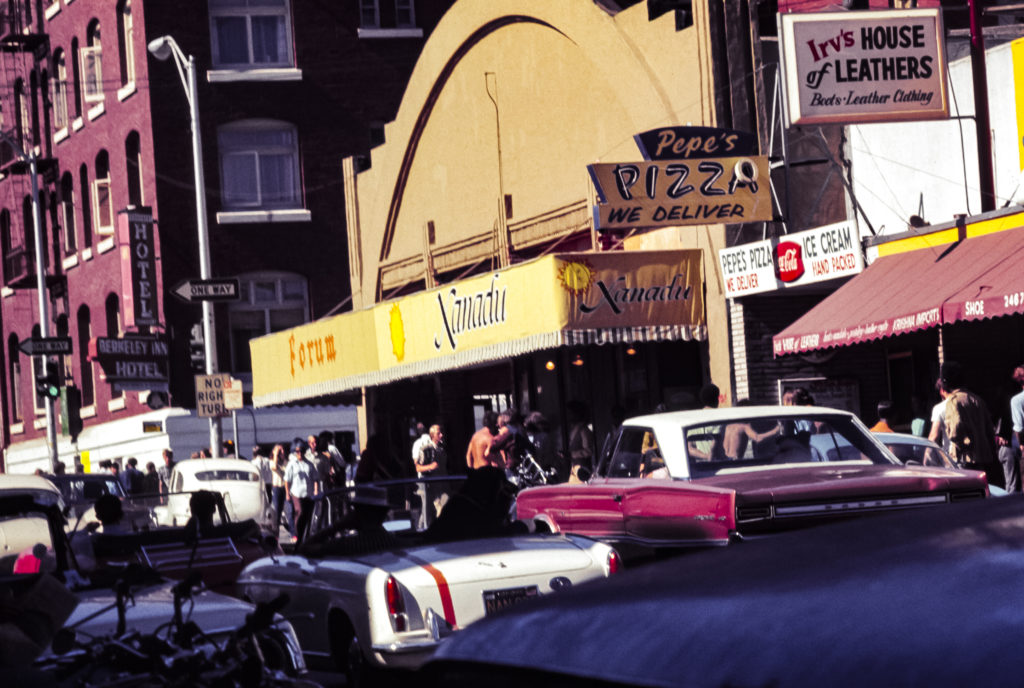
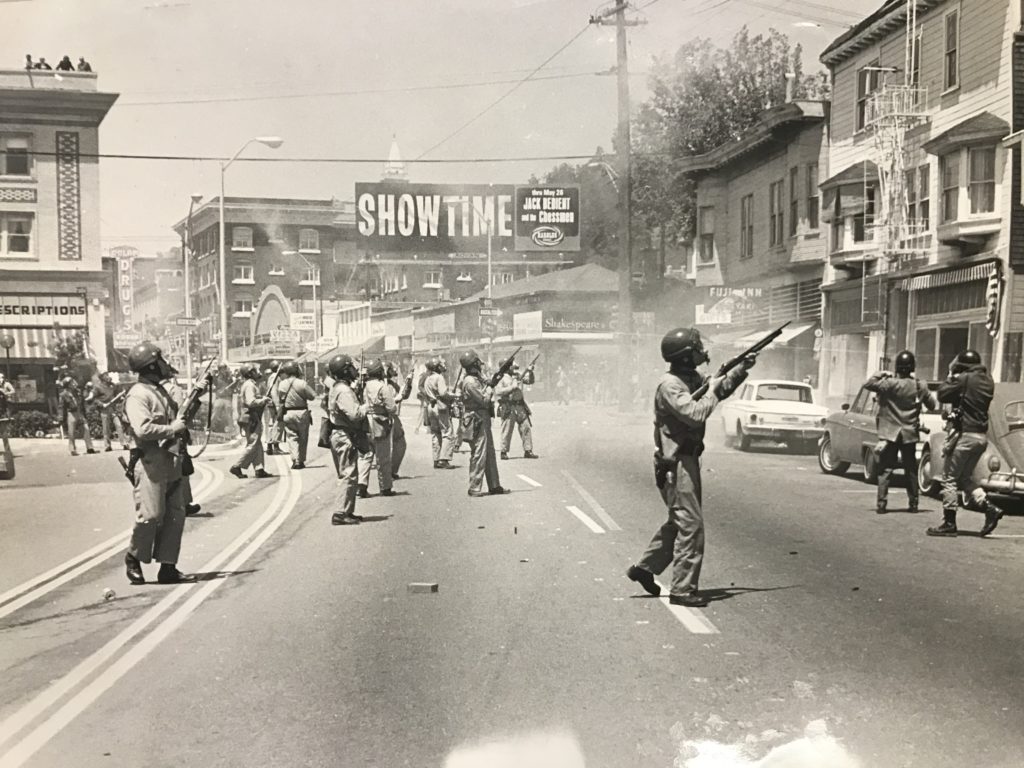
People’s Park Mural and the Riots of ‘69
Location: Haste above Telegraph
The story of People’s Park and the protests around the park and told through the mural.
Commentator: Osha Newman, Creator of People’s Park mural
Curb cuts and the Center for Independent Living
Location: 2537 Telegraph
Telegraph is where handicapped curb cut-outs began. The was the first street in the US to be entirely modified to include these. How this happened and how it changed the lives of people who use wheelchairs.
Commentator: Susan O’Hara from Director of the UC Berkeley Disabled Students' Program
